Camping in BC's Cariboo Chilcotin Coast
Clinton Pines RV | 6ixSigmaRV’ers and Campers Strike Gold in BC’s “Land Without Limits”
Vast beauty. Colourful history. Ecological diversity. And the chance to strike gold! Come see why the Cariboo Chilcotin Coast is a Land Without Limits. No limits on the views. No limits to adventure. No limits on the life-changing experiences. From pitching a tent in an alpine meadow to brewing camp coffee at a lakeshore RV site, BC’s Cariboo Chilcotin Coast is a throwback to a simpler, less complicated time; when road-weary travellers could pull into a campground at pretty much anytime and find a primo site. You don’t need a BC camping reservation site six months in advance—though feel free to do so, for added peace of mind. Three distinct regions offer an outstanding variety of open-air adventure under endless skies.
Cariboo (with two o’s:

70 Mile House, BC | Kelly Tuohey
For thousands of years prior to European colonization, Indigenous tribes dwelled in small settlements near the shores of Canim Lake, where herds of wild caribou roamed freely. Identical in genetic makeup to the reindeer of Scandinavia and northern Canada, both male and female caribou grow impressive antlers throughout their lifespan. Early visitors to the region were struck by the majesty and size of these magnificent ungulates, and so they named this part of the territory “the Cariboo.” The Cariboo Gold Rush of the 1860s drew fortune-seekers from all over the world, as thousands of settlers navigated the treacherous currents of the Fraser River to pan for gold near Barkerville and Williams Lake.
Now, it’s campers and RV enthusiasts who are the lucky ones. While early settlers endured no end of hardship, today’s visitors can relax and camp on the shores of dozens of lakes that dot these rolling hills west of the Cariboo Mountains. This is a gold mine of unhurried, spontaneous camping, with over sixty commercial and provincial park campgrounds and resorts ready for your dome tent or RV. Even luxurious, high-end guest ranches—the kind with beautifully peeled log cabins and gorgeous quarter-horses tied to the hitching post—cater to RV campers and tenters; though the latter might pay a premium for plugins. Pet owners will be happy to find out that these campgrounds are generally pet-friendly.
If there’s a soundtrack for summer camping, it’s the ghostly call of a loon echoing across a still mountain lake while tiny waves lap on a pebbled shoreline. Could there possibly be a better place to hear this call of the wild than at Loon Lake? (And loons aren’t the only birdlife; bald eagles, hawks, swans, woodpeckers and even herons are regular visitors). Campgrounds and cabins abound on this clear, deep lake. Lots of boats, canoes and kayaks to rent, with even paddle boats for the kids. Recent archeological digs reveal that aboriginal First Nations lived by the shores of Canim Lake over 4,000 years ago.
Nowadays, you’re just as likely to encounter European tourists in a convoy of recreational vehicles on a journey of discovery in this land without limits. Thirty-five kilometres (21 mi) northeast of 100 Mile House (or “Hundred Mile” as the locals call it), Canim means “canoe” in the parlance of the local First Nations, who still live close by. This pristine body of water is 35 km (21 mi) long and is suitable for both motorized craft and, of course, canoes. Camping options range from primitive to deluxe; guest lodges such as Kayanara Guest Ranch, Canim Lake Resort, South Point Resort, Rainbow Resort and Reynolds Resort welcome RVers and tenters, too. Campers can take advantage of a wide range of facilities including boat rentals, guided fishing and on-site dining. There are dozens of delightful hikes on trails close to the lake as well, including Canim Falls at the eastern end of the Lake in Wells Gray Provincial Park.
Quesnel Lake is like having a fjord similar to Bentick Arm, where Bella Coola is situated) moved hundreds of kilometres inland from the ocean. Carved by glaciers that ground their way out of the Cariboo Mountains eons ago, “Y-shaped” Quesnel Lake splits into a north and south arm. Camping options range from plush RV resorts to hidden forest service road sites, with tons of secret beaches and coves to boat or kayak to.
What really draws in the visitors is the chance to haul in record rainbow and lake trout. One of the region’s many undiscovered secrets lies along Highway 24 connecting the Cariboo to the North Thompson River Valley. Settlements are few and far between, but fishing lakes and campgrounds are easy to find on “The Fishing Highway.” Find the perfect place to pound in your tent pegs (or block your wheels) at Loon Bay Resort, Hathaway Lake Resort, Eagle Island Resort, Moosehaven Resort, Cariboo Bonanza Resort and Fawn Lake Resort.
Chilcotin: From Cattle to Canyon

Nimpo Lake, BC | Destination BC/Kari Medig
West of Williams Lake, Highway 20 steadily descends into Farwell Canyon, a spectacular gorge carved by the mighty Fraser River. Smack in the middle of the province is BC’s prime rangeland, the Chilcotin Plateau is a huge expanse of grasslands, forest, rivers, lakes and wildlife. Anahim and Nimpo Lake are both remote way-points on the road west into the Coast Range. Yet Anahim Lake is surprisingly accessible, with daily air service direct from the south terminal at Vancouver International Airport (YVR).
At Nimpo Lake, resident beavers compete for space in the water with DeHavilland Beavers, the single-prop bush plane that has carried countless geologists, hunters, fishermen, surveyors and even doctors to remote work camps and wilderness lodges. Combine your love of camping and fishing—or just relaxing—at any of these fine resorts; Moosehorn Lodge (Uncha Lake), Nimpo Lake Resort, Chilcotin’s Waterfront Resort, (Nimpo Lake) and Escott Bay Resort (Anahim Lake). Woodlands Fishin Resort and Barney’s Lakeside Resort all share the sizeable bounty to be found in Puntzi Lake).
Coast: The Great Bear Rainforest

MacNaughton Group Islands, BC | Geoff Moore
The Chilcotin plateau ends where the Coast Range mountains form an impenetrable barrier of rock and ice. Highway 20 traverses Tweedsmuir Provincial Park, jumping off spot for limitless backcountry adventures. Here, grizzly bears, bearded mountain goats and massively-antlered moose outnumber humans by a thousand to one—maybe more. Camping in and around Bella Coola differs greatly from the high rolling hills of the Chilcotin, as sheer granite walls, tumbling glaciers and dense forest hems in one of BC’s most enchanting valleys and the Great Bear Rainforest. The forest air smells fresh and fragrant, and you recall time spent as a child when you had nothing better to do than sit down by the river banks and whittle on a dry piece of wood.
The camping options are eclectic and wonderful in this rugged region of the province. Located east of Bella Coola near Hagensborg, the Bailey Bridge Campsite and Cabins and the Rip Rap Campgrounds and Cabins offer secluded camping or cabin accommodation spots right on the Bella Coola River, with views of the Coast Range mountains. As with every destination in the Cariboo Chilcotin Coast, there are plenty of fishing and hiking options nearby, too. From Winnebagos to Westphalias, the Cariboo Chilcotin Coast welcomes campers in all sizes and shapes!
by Steven Threndyle
Featured Partners
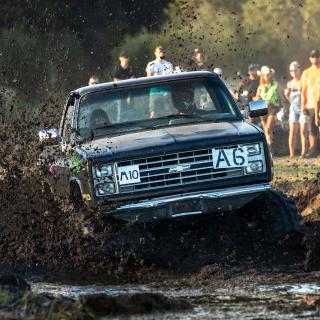
100 Mile Horsepower Ranch
100 Mile Horsepower Ranch is a Motorsports and outdoor recreational facility just outside 100 Mile House, BC. We are a campground that holds motorsports events and private events. Our facility is situated on 150 acres of privately owned land.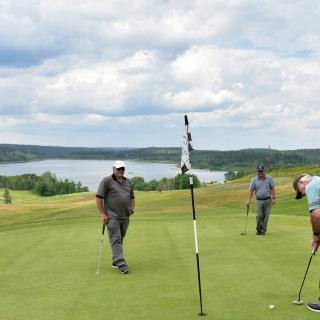
108 Golf Resort
The 108 Golf Resort is located in the rolling hills of British Columbia's spectacular Cariboo region. Graced by two lakes, a CPGA golf course and miles of riding trails through wooded forests, you'll find ample ways to enjoy your stay.…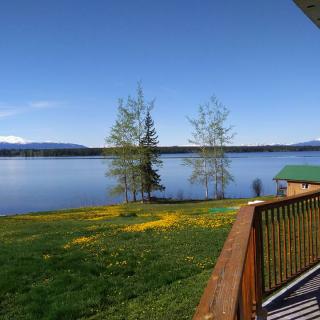
Anahim Lake Resort
Rustic Simplicity! The resort encompasses cozy lakeshore cabins-plus one full service cottage. Central shower and flush toilet, running water, wood & propane cooking stoves, electricity and with panoramic views. Trail riding, flight seeing, fly-in fishing, hiking bird watching, and renowned…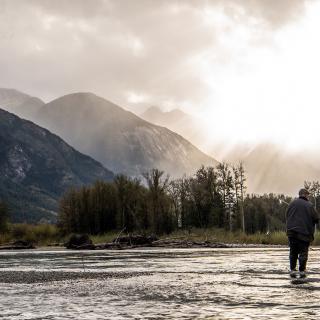
Bailey Bridge Campsite and Cabins
Located in beautiful Bella Coola and inspired by the surrounding landscape. Bailey Bridge Cabins, Campsites, RV Hook Ups are designed to make your visit unique, comfortable and a fun experience. Call us today or complete our contact form with your…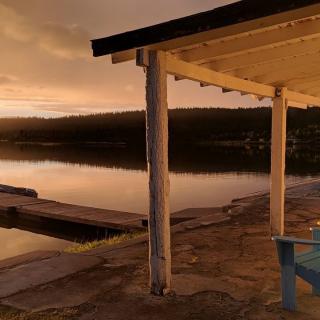
Barney's Lakeside Resort
Come experience the peace and quiet of the Chilcotin our motto is "Get away from it all” unwind, unplug - it's stress-free. Come fishing for Kokanee and wild Rainbow Trout, an abundance of wildlife, hiking trails and unlimited 4×4 and…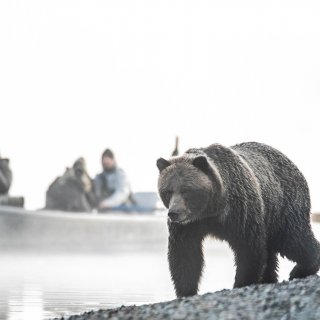
Bear Camp
Enjoy a world-class adventure at this converted hunting & fishing camp, where you'll find yourself deep in the unspoiled raw wilderness of British Columbia's Pacific Coast Mountain Range. Get ready for exceptional wildlife viewing and opportunities to explore on foot…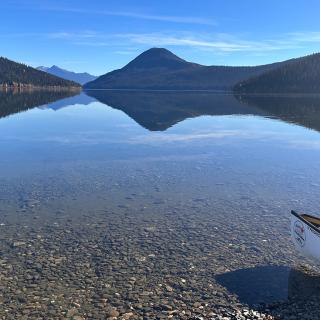
Beckers Lodge
Becker’s Lodge, is an all-season adventure resort on Bowron Lake, BC. We have lakeside cabins, Year-round restaurant kayaks, canoes, ATVs (quads), mountain bikes, and snowshoe rentals. We are outfitters to the Bowron Lake Provincial Park canoe circuit, providing cabins, canoe…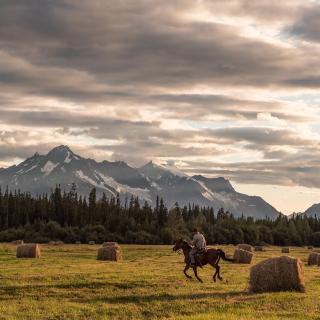
Bracewell's Alpine Wilderness Adventures
Three-generation business specializing in multi-day horseback trips into the interior and coast mountains, lodge accommodations for day trips, fishing and relaxing by choice.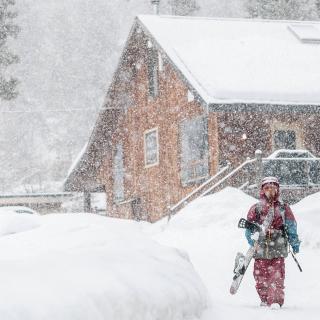
Bralorne Adventure Lodge
We are a boutique accommodation lodge in Bralorne BC catering to private groups. Just you and your friends and the mountains with excellent back yard access to exceptional snowmobiling, backcountry skiing and snowboarding, mountain biking, dirt biking, hiking, and just…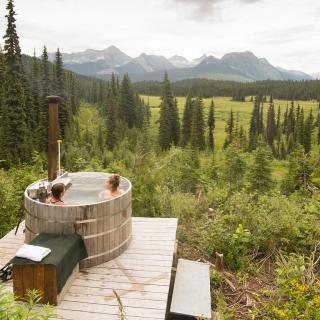
Cameron Ridge Bungalows
Jewel of the Mountains! A paradise of opportunity awaits you in the heart of the Cariboo Mountains at Cameron Ridge Bungalows. Offering exclusive Cabin Rentals, Guided Hiking Excursions, Heli-Hiking, Photo Safaris, Bird Watching, Wildlife Viewing and more, there is no…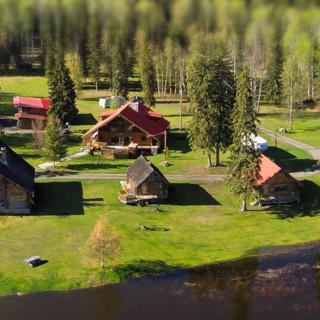
Canim Lake Resort
Canim Lake is located south-west of Wells Grey Park. It is a large, 24-mile long lake surrounded by mountains and rolling hills. It is a perfect natural sanctuary for peace and prosperity. Beyond the borders, numerous trails invite you to…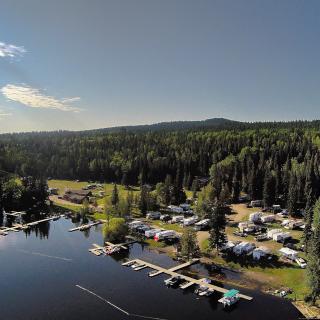
Cariboo Bonanza Resort
Only a short, 15-minute drive East of 100 Mile House, the Cariboo Bonanza Resort offers everything you need! 11 cabins, 1 luxury chalet and 50 full hookup (15 and 30 Amp) sites all with a view of the lake. We…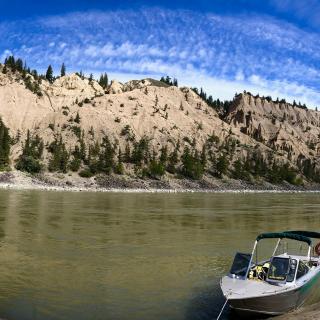
Cariboo Chilcotin Jetboat Adventures
Cariboo Chilcotin Jetboat Adventures offers tours 15 minutes west of Williams Lake BC. Tours begin in May and end in October. We offer day trips and multi day trips showcasing beautiful river scenery, Indigenous culture sharing experiences, gold rush history…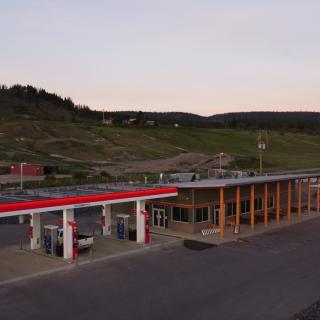
Chilcotin River Trading
First Nations owned and operated full-service gas station that offers regular, premium, and diesel at all 6 pumps. The store also offers a card lock for businesses and semi trucks. Come try the best local grilled sandwiches in the West!…
Chimney and Felker Lakes Landholders Association
The Chimney and Felker Lakes Landholders Association is a non profit society created for the members and visitors to our small community. We have a combined Fire Hall/Community Hall. The hall is used by our association for meetings and fire…
Cottonwood Bay Resort
Cottonwood Bay Resort is located at Bridge Lake, one of the nicest lakes in the Cariboo. With over 20 islands, Bridge Lake is perfect for canoeing. Watch the eagles, follow the loons etc. Good fishing for Kokanee, Rainbow Trout and…
Crooked Lake Resort
A beautiful, picturesque spot in the Cariboo Mountains of British Columbia, private and secluded. An off-the-grid, remote wilderness resort where our guests can escape the pace and encumbrances of modern day life, to enjoy seclusion, solitude and back-country recreation. We…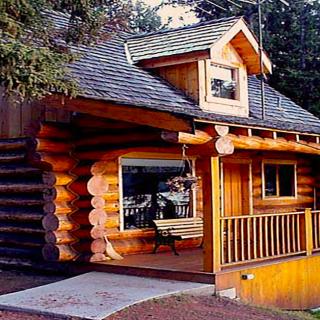
Crystal Springs Resort
Crystal Springs Resort is located on the shores of beautiful Lac La Hache. Well kept facilities offer deluxe chalets right on the lake with camping, spacious pull thru and full service RV sites. Well maintained and clean lakeside resort. Docks…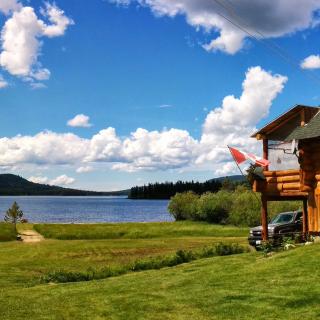
Eagan Lake Resort
A family oriented resort located in a beautiful and quiet wilderness setting, with seven cozy family size log cabins and eight campsites with fire pits. The resort is located on 8 acres at the west end of Eagan Lake with…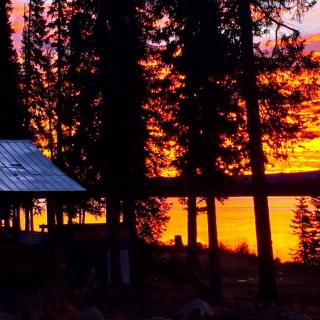
Eliguk Lake Lodge Outfitters
Custom Tailor Your Wilderness Getaway - A true Canadian, off-grid, rustic wilderness experience! Cozy Log Cabins - Waterfront Cabins with cozy beds, fully stocked for all your requirements. All-Inclusive Dining - Forest to Table ~ Greenhouse ~ Farmed ~ Homemade ~ Chef…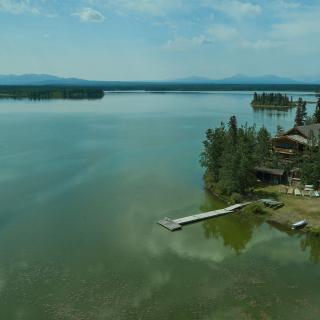
Escott Bay Resort
Self-contained cabin and chalet accommodation, campground and serviced RV sites, boat, kayak and canoe rentals. Experiences available include fishing, boat trips to remote lakes and the Upper Dean River, bird watching and hiking in the Rainbow Range Mountains. Minimum of…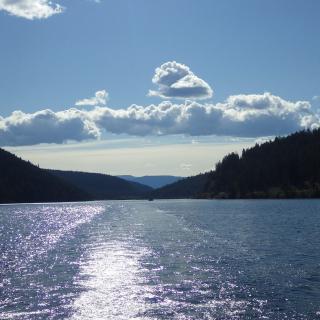
Evergreen Fishing Resort
Family owned for 65+ years. Offering deluxe cabins on the shore of Loon Lake, as well as RV and Tenting sites. Several types of boat rentals, from pontoon to aluminum fishing boats, as well as canoes, kayaks and paddle boats.…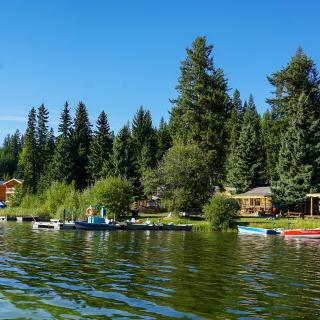
Fawn Lake Resort
We are located 4km off Highway 24 in a quiet wilderness setting; only electric motors are permitted on Fawn Lake. We offer charming lakefront log cabins & RV/campsites with 15A power & water. Pets are very welcome. Amenities include motorboat,…
Firvale Wilderness Camp
Retreats, packages, and accommodation in the Heart of the Great Bear Rainforest. We offer safe and affordable guided tour packages in the Bella Coola Valley as well as nightly accommodation rentals.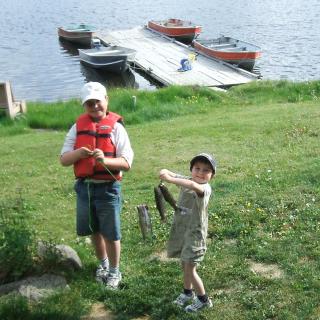
Fishpot Lake Resort
Here at Fishpot Lake Resort we offer 8 lake front cabins and 10 campsites. We have a playground, swim dock, boat launch, and boat dock. We are a 2017 Plateau Fire Survivor. The lake is stocked yearly with trout. We…
Fraser Cove Campground
Fraser Cove Campground and River Front Guest Cabin is located just off Hwy 99 in Scenic Lillooet BC. Fraser Cove sits on 1200 Feet of Fraser River Frontage. We are beside the historic suspension bridge, built in 1913, which is…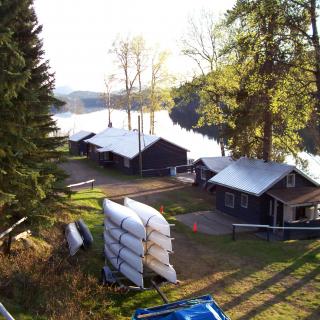
Hathaway Lake Resort
Our Resort is situated only a 5 hour drive from Vancouver, BC on Mahood Lake Road. Come and enjoy the quiet that greets our guests. Walk our nature trails or just relax. Stay in our cozy cabins right on the…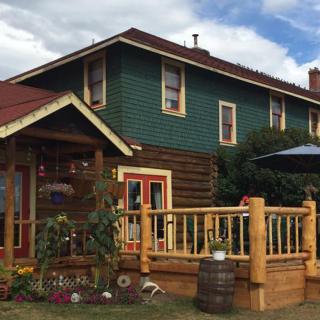
Historic Chilcotin Lodge
The Lodge is located in Riske Creek on the Chilcotin Plateau, not far from the confluence of the Fraser and Chilcotin Rivers. It is also close to both the Junction Sheep Range Park which contains a large herd of California…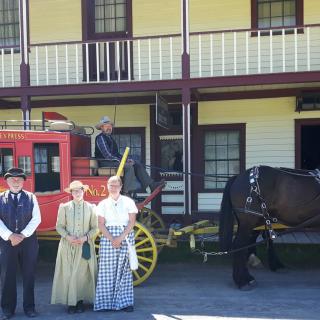
Historic Hat Creek
Step back in time and experience an original roadhouse built during the 1800's gold rush. Stagecoach rides, souvenir shop, restaurant, camping, cabins are all there to enjoy. You can even stay overnight in a covered wagon.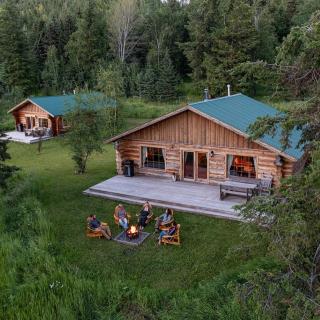
Kayanara
We all deserve to dream! Come experience everything this area has to offer. Located in the heart of the South Cariboo, only a stone's throw away from beautiful Canim Lake Beach. Kayanara resides on a serene 220 acres, nestled amongst…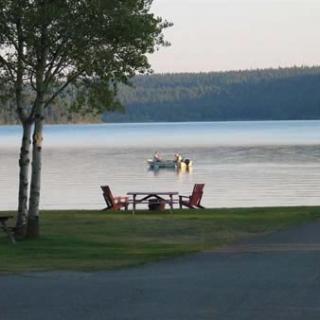
Kokanee Bay Resort
Welcome to relaxation at its finest. At Kokanee Bay Resort we invite you to come and experience the beautiful Cariboo in the comfort of our hospitality. Kokanee Bay is a quiet and relaxing setting for the entire family. Located along…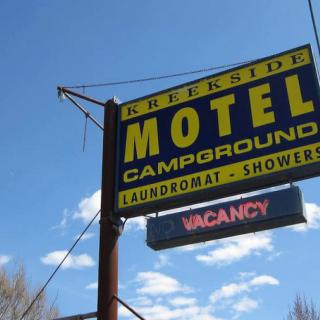
Kreekside Motel & Campground
If you are looking for a place to rest, relax, hunt, fish, or even pan for gold, look no further than Kreekside Motel, Campground and Trailer Park. Our location is also a great place for family gatherings or a quick…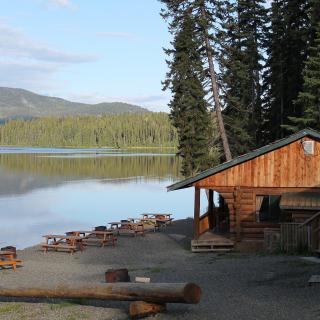
Lac Des Roches Resort
Located just off "Fishing Highway 24" in Bridge Lake, British Columbia, this resort features on-site fishing opportunities and a gourmet Italian Restaurant. A separate living area with a sofa bed and TV is provided in each rustic cottage at Lac…
Lakeview Acres at Morehead
Make one of our cabins or campsites your home base as you enjoy exploring this spectacular region of Central British Columbia. We are centrally located, with many good fishing lakes and historic sites close by. Take a trip to historic…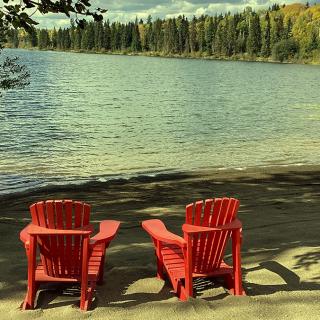
Laughing Raven Resort
A place to relax with room to roam! Formerly known as the historic Double T Guest Ranch, on the shores of Burn Lake. Log cabin rentals, RV campsites, hiking and biking trails, and much more.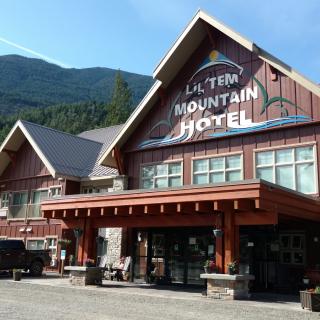
Lil'tem Mountain Hotel
From rainbow trout fishing in the nearby lakes, to exploring the hiking trails in the surrounding mountains, this small community offers a friendly and comfortable place to stay while enjoying the area. Also rich in St’át’imc Tsal’alh culture, Seton Portage…
Loon Bay Resort
Loon Bay Resort, a serene family and pet-friendly resort to unwind and forget about your stressful days. We are located in a tranquil bay right on Sheridan Lake with 600 metres of waterfront. Most of our RV sites are right…
Marigold Fishing Resort
Located on the shores of Loon Lake just 4.5 hours from Vancouver, Marigold is pet friendly & a recipient of the TripAdvisor certificate of excellence. Our comfortable, lakefront cabins & RV's have fully equipped kitchens, hot & cold running water,…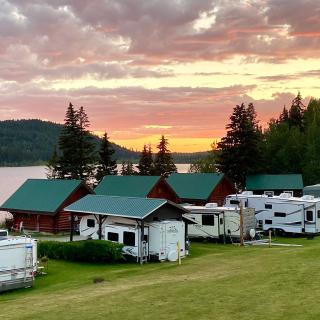
Martens Resort
Welcome to Martens Resort on beautiful Timothy Lake! Book your next family vacation at our lakefront resort, where we have several cabins and fully serviced RV sites right on the shores of Timothy Lake. If you are looking for a…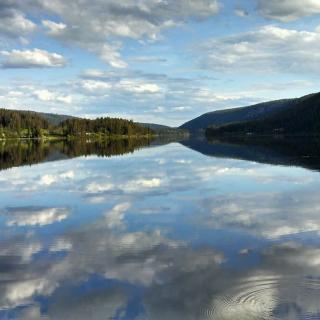
McLeese Lake Resort
A gorgeous little campground just 20 minutes north of Williams Lake, equipped with motel rooms from basic to kitchenettes, variety of cabins and camping stalls from pull thru with full service to basic all on the shores of beautiful McLeese…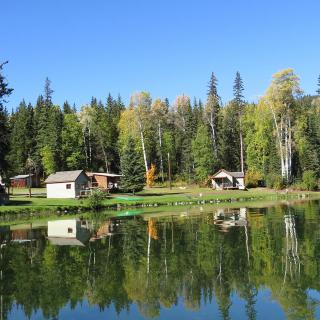
Moosehaven Resort
Scenic natural beauty on Hathaway Lake in the South Cariboo, BC. Moosehaven offers 30 massive RV campsites, all serviced with 50 or 30 amp power, sewer and water, as well as 6 clean charming cabins. Great fishing for Kokanee, Rainbow…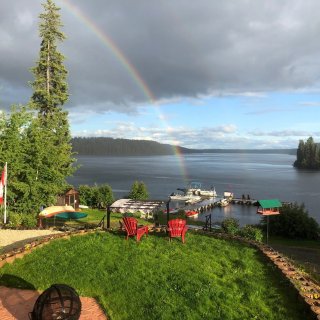
Nimpo Lake Resort
Nimpo Lake Resort is the perfect place to relax and enjoy the wonders of the West Chilcotin scenery and wildlife. Our restful lake-side resort offers modernized log cabins with country charm. Each cabin has a private deck and firepit. Cabins have…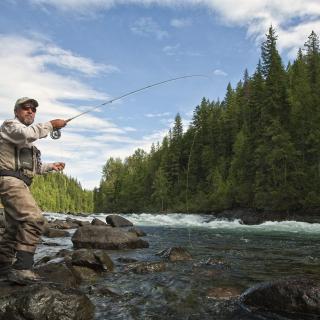
Northern Lights Lodge
We are a full-service fly fishing lodge located deep in the Cariboo Mountains of BC, Canada. Our lakeside lodge is surrounded by multiple rivers and lakes on which we offer fully guided fly fishing adventures for both native rainbow trout…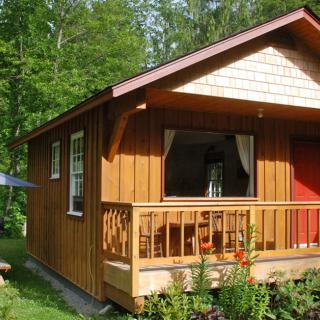
Nusatsum River Guest House
Centrally Located in the Bella Coola Valley, 10 minutes east of Hagensborg, and 30 minutes west of Tweedsmuir Park Bear viewing station. With stunning views of the Coast Mountains you can relax in comfort on the decks, or take a…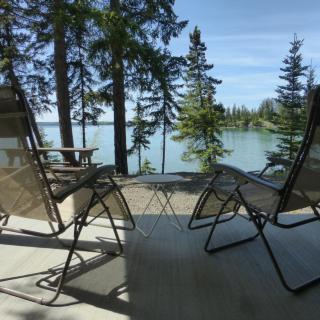
Piney Point Resort
Piney Point Resort opened around 1965, making it one of the oldest resorts on Sheridan Lake in the Cariboo. Come to Piney Point for the many lakes nearby (100+), full hookup campsites, clean cabins with full kitchens or our luxurious…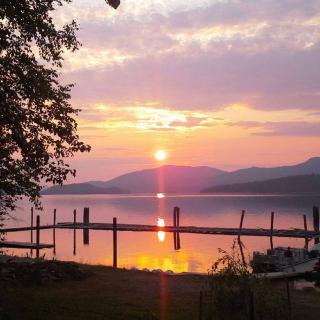
Plato Island Resort & Marina
Welcome to our gem in the wilderness on pristine Quesnel Lake. Enjoy daily or seasonal camping, our renovated cabins, protected marina and locally-food sourced food that will please the most spoiled foodie.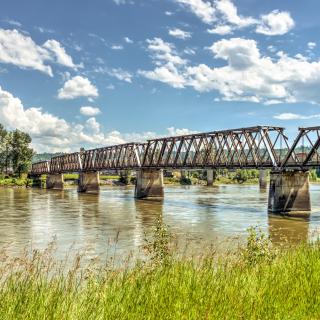
Quesnel Downtown RV Park and Campground
Quesnel Downtown RV Park & Campground is located along the Quesnel River, within walking distance of the shops and restaurants of downtown Quesnel, accessible via the Riverfront Trail. Find out more about what to do during your stay at tourismquesnel.com.…
Rainbow Resort
Open from May-September, we offer a range of cabins and camping to meet your needs! Come stay with us on beautiful Canim Lake and enjoy the serenity of the Cariboo.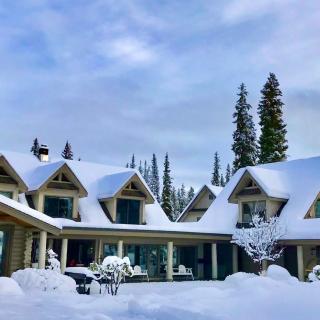
Retreat Wilderness Inn
Retreat Wilderness Inn is an all-season destination, offering intimate, four-star suites. With over 40 years of experience operating this property, your hosts, Donn and Lee will assist in making your vacation one to remember. Our picturesque, landscaped, lakefront grounds provide…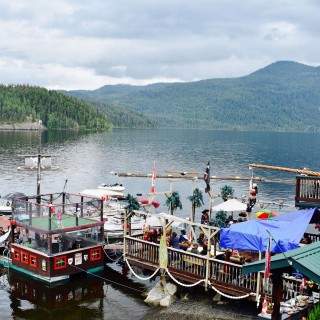
Reynolds Resort
Family fun on gorgeous Canim Lake! We have 7 spacious cabins facing the lake and 28 RV Sites with full 30amp hook-ups with great fishing and great water sports available. Boats for rent, play yard for kids, marina with a…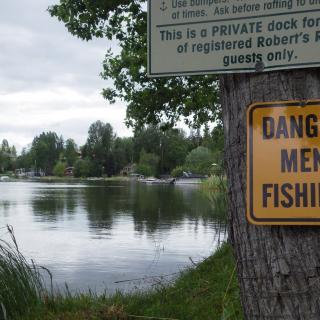
Robert's Roost Resort
We welcome old and new visitors to enjoy this beautiful RV park and campground situated on the shores of Dragon Lake. The campground is located 10 minutes south of downtown Quesnel with a large selection of RV sites. Dragon Lake…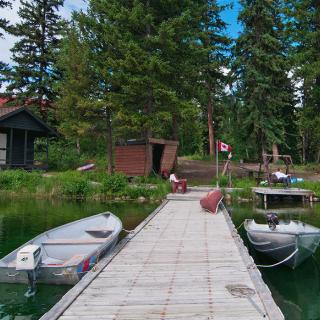
Ruth Lake Lodge Resort
Located in the South Cariboo Region, this park-like wilderness retreat known as Ruth Lake Lodge Resort is only 33km from 100 Mile House. The 37-acre property offers many groomed trails and easy access to the great outdoors. The large waterfront…
Siwash Lake Wilderness Resort
This National Geographic Unique Lodge of the World is renowned as a top luxury wilderness resort, guest ranch, and eco-retreat. Here, guests can explore BC's backcountry by foot, mountain bike, canoe, helicopter, or horseback. Hone in on your love for…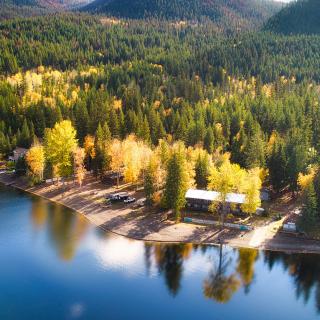
South Point Resort
South Point Resort offers year-round adventure on beautiful Canim Lake, BC. An amazing home base for whatever your adventure, South Point Resort offers a mix of accommodation options. Self-contained lakeside condos with wifi, full kitchenettes and just steps from the…
Tall Timbers Resort
With a lake fishing resort experience, summer days are perfect for fishing, boating, canoeing, hiking , biking, swimming, and horseback riding. A perfect setting for photography, take time to view the wild life. Tall Timbers Resort is a great destination…
Tatla Lake Manor/Motel Ltd.
Welcome to Tatla Lake Manor/Motel Ltd., your perfect retreat nestled halfway into the breathtaking Chilcotin region. Whether you're embarking on an adventure to Bella Coola, heading east to Williams Lake, or exploring the pristine lakes of Chilco, Tatlayoko , Cochin,…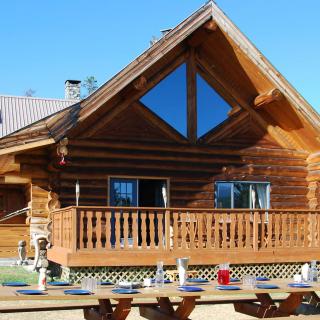
Terra Nostra Guest Ranch
A Canadian Guest Ranch Experience awaits in one of the most unspoiled areas of the Chilcotin BC district: Terra Nostra Guest Ranch on Lake Clearwater. Enjoy a walk, hiking or horseback riding in unspoiled nature, or explore the lake by…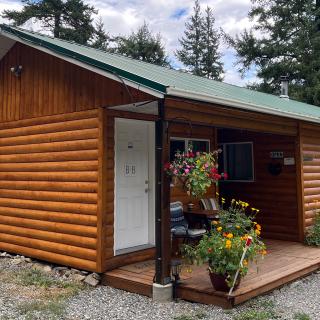
Texas Creek Campground, B&B, Cabin
We are a small campground offering RV site (14 Amp), Bed and Breakfast, a cabin, and tent sites.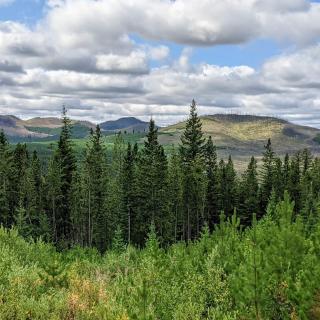
Three Nations Store & Lodge
THREE NATIONS STORE AND LODGE PROVIDES NEEDS FOR THE MODERN EXPLORER! Currently, the Store is the only facility within 55 km for visitors to purchase items. There is a gas station and restaurant and rustic accommodations for weary travellers. The…
Thunder Mountain Adventures
Whether visiting the Bella Coola valley for fishing, hiking, wildlife viewing, photography or a family vacation you will be comfortable and well situated at our property. Our private 22 acres is adjacent to Burnt Bridge conservancy, Tweedsmuir Provincial Park and…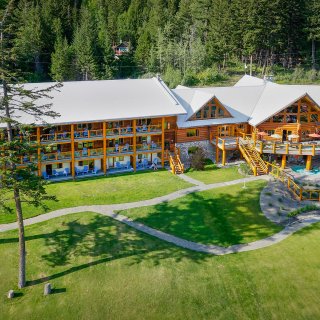
Tyax Lodge & Heliskiing
Resting on the shores of Tyaughton Lake in the heart of the southern Chilcotin Mountain of British Columbia, the wilderness resort showcases rugged mountain peaks, pristine lakes, stunning glaciers and a diverse ecosystem of wildflowers and wildlife. In the summer,…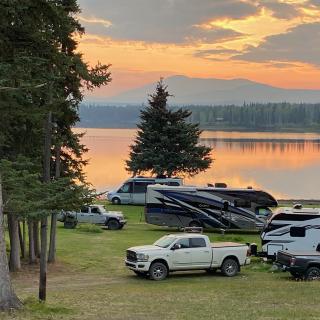
Vagabond RV Park Resort
Our family oriented park is located right on Nimpo Lake and has everything you’ll need. From RV sites to cabins and the possibility to camp with your tent. Our log cabins have their own bathroom and the kitchens are fully…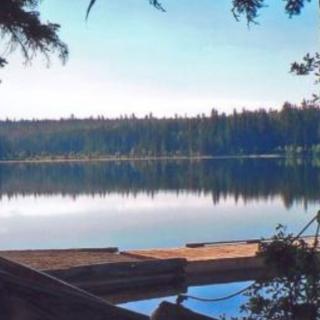
Watch Lake Lodge
Watch Lake Lodge incorporates 12 rustic cabins, 8 sites for tents, trailers, and campers, a safe swimming area, row boats, and a small convenience store. It's known for excellent Rainbow Trout fishing, horseback rides, and even small cattledrives. Rustic and…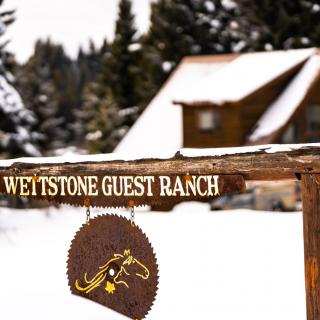
Wettstone Guest Ranch
Nestled in the Interlakes Area of the South Cariboo in British Columbia, Canada, the Wettstone Guest Ranch is close to an array of outdoor activities, yet far from the crowds of Jasper or Banff. Here you will experience the Wild…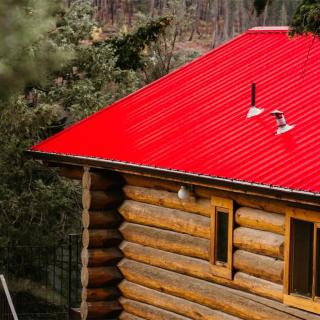
White Moose Resort
Cabin/Camping hunting and fishing resort right on Loon Lake with boat rentals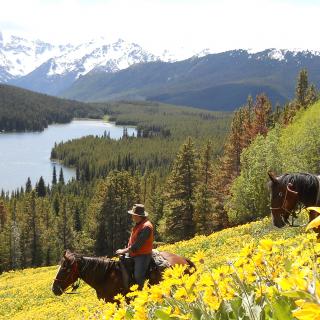
Wilderness Trails
Wilderness Trails facilitates conservation trips into the vast wilderness of the Chilcotin Ark. All our trips are based on our six principles of Nature Connection, Conservation and Stewardship, Personal Development, Self-Sufficiency, Empowerment and Conscious and Aware. Each and every wilderness…
Williams Lake Golf and Tennis Club
The Williams Lake Golf & Tennis Club offers a variety of facilities to ensure that your golfing experience is second to none. In addition to our 18-hole course, we offer onsite camping, delicious dining at the Fox\'s Den Bar &…
Willow Springs Resort
Willow Springs Resort is open April to October. All sites are full service, tent sites, campfires, swimming, clean washrooms, hot showers, laundry, hiking, row boat, ice and wifi. Daily, weekly, and monthly rates are available.